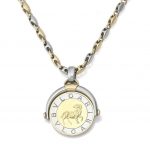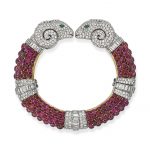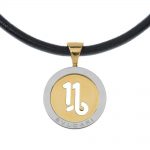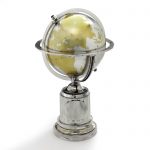Bulgari is one of the oldest Italian jewelry houses dating back to 1884. The trademark is BVLGARI. BVLGARI in the classical Latin alphabet is derived from the founder’s surname, a Greek silversmith, Sotirios Voulgaris (Italian: Sotirio Bulgari). He opened his first antiquarian and silversmith business soon after moving to Rome in 1881. In 1915, he decided to concentrate his business on Jewellery, giving up all of his other businesses, keeping only the Jewellery boutique in the heart of Rome on the prominent Via dei Condotti, 10. Reference Sotheby’s
In 1932 Sotirio passed away, leaving the business to his two sons, Giorgio (1890–1966) and Costantino (1889–1973), who each had a keen interest in precious stones and jewels. During the Second World War, most new jewellery was crafted out of gold, as gems were scarce, and designs became more natural feeling. As the 40s came to a close, Bulgari introduced Serpenti bracelet-watches.
During the 1970s, stores opened in New York, Geneva, Monte Carlo and Paris. This era marks the beginning of the Group’s international expansion, with Gianni as chairman and CEO. A number of new motifs made their debut as well—jewels became recognisable for their angular forms, strong colours, oval elements with cabochons, chains and maxi sautoirs, whilst the predominant use of yellow gold made precious pieces feel all the more wearable, and became known as a Bulgari trademark. In 1977, the company entered the world of horlogerie with the launch of the BVLGARI BVLGARI watch. At the time, Gianni led a complete overhaul of the company, focusing on product design
Bulgari often used classical features in his design and also made a series of zodiac necklaces and pendants. Below are some examples of his work with an astrological theme. Although there is no definite reference that the Ram bracelet is based on astrology, I have included it as the Ram is one of the twelve Chinese zodiac signs.
A Zodiac necklace. The bicoloured fancy-link necklace suspending a swivel fob, one side cast to depict the Zodiac symbol for Aries, signed Bulgari, lengths: pendant 3.4cm, necklace 70.0cm, maker’s case
Sold for £ 1,250 inc. premium at Bonhams in 2018
RUBY, EMERALD, DIAMOND AND ENAMEL RAM BANGLE, BULGARI Cabochon rubies and emeralds, circular and rectangular-cut diamonds, black enamel, platinum and gold, inner circumference 17.8 cm, signed Bulgari, brown Bulgari pouch
Sold for CHF 162,500 at Christies in 2018
A ‘Bulgari Bulgari Tondo Capricorn’ pendant. Of bi-colour design, the circular-shape plaque with openwork zodiac motif, suspended from a black leatherette cord. Signed Bulgari. Length of pendant 4.3cms. Length of cord 38cms. Weight 24gms.
Sold for £260 at Fellows in 2015






